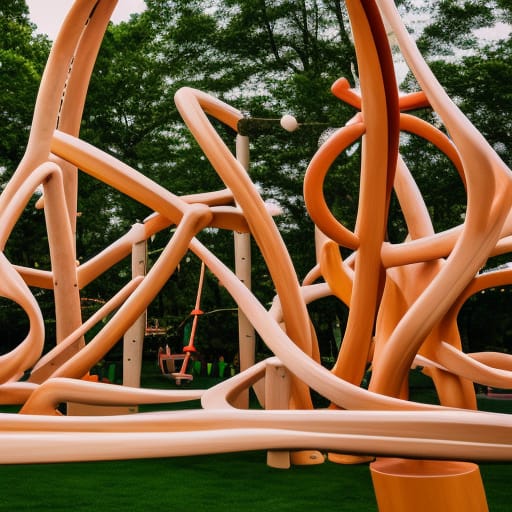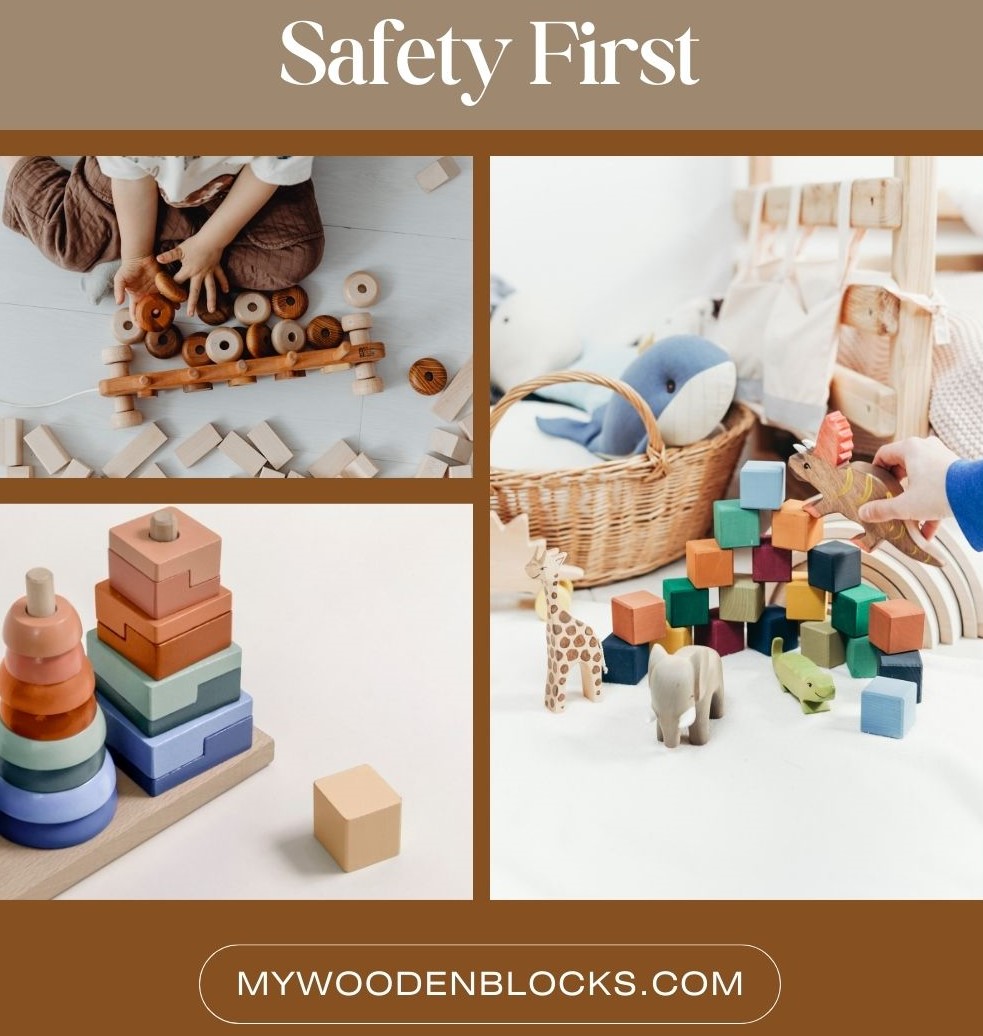In the quest for safer and healthier living environments, researchers have uncovered a remarkable natural solution—antibacterial wood.
In this blog post, we’ll dive into the world of antibacterial wood, exploring its types and unveiling the numerous benefits it offers.
Discover how this extraordinary material combines beauty, sustainability, and a shield against harmful microbes.
When you have learnt about the benefits of wood above any other material, you may want to check the products that will make your kid’s childhood happy and healthy.
Types of Antibacterial Wood
Antibacterial wood, also known as antimicrobial wood, is a specially treated or naturally resistant wood that possesses inherent properties to inhibit the growth of bacteria, fungi, and other microorganisms.
Unlike synthetic alternatives, it harnesses the power of nature to create a safer and more hygienic environment. You may find this article useful for this topic.

Types of Antibacterial Wood:
- Cedar: Renowned for its natural oils, cedar contains compounds that repel insects and inhibit bacterial growth. It is widely used in various applications, from furniture to outdoor structures, providing both functionality and beauty.
- Bamboo: Known for its rapid growth and sustainability, bamboo possesses inherent antibacterial properties. Its unique composition makes it an excellent choice for flooring, cutting boards, and other household items where hygiene is paramount.
- Teak: Celebrated for its durability and resistance to decay, teak wood is a popular choice for outdoor furniture and boat decks. It contains natural oils that help fend off bacteria and maintain its structural integrity even in harsh conditions.

Cedar and bamboo are commonly used types of antibacterial wood for children’s wooden toys. These woods have natural properties that help repel insects and inhibit bacterial growth, making them suitable choices for creating hygienic and safe toys for children.
Benefits of Antibacterial Wood
Antibacterial wood offers a multitude of benefits that make it a desirable choice for various applications.

First and foremost, antibacterial wood creates a healthier living environment by minimizing the presence of harmful microorganisms. It reduces the risk of bacterial contamination, making it ideal for applications such as kitchen countertops and children’s toys.
Unlike synthetic antibacterial agents, which may have potential side effects or contribute to antimicrobial resistance, antibacterial wood harnesses the power of nature in a sustainable and safe way.
By inhibiting the growth of bacteria, fungi, and other microorganisms, it helps reduce the risk of cross-contamination and the spread of harmful pathogens.
Choosing antibacterial wood promotes sustainability and reduces reliance on synthetic antibacterial agents. It aligns with eco-friendly practices and supports the use of renewable resources.
Apart from its functional properties, antibacterial wood offers a visually appealing and warm ambience. Its natural grain patterns and textures add a touch of elegance to any space while ensuring a hygienic environment.
In addition to its antibacterial qualities, this type of wood also boasts remarkable durability and resistance to decay. It can withstand the test of time, making it suitable for long-lasting applications.
Whether used in toy production, flooring, furniture, or outdoor structures, antibacterial wood provides both functionality and aesthetic appeal.

Furthermore, antibacterial wood exhibits excellent hygienic properties, making it particularly suitable for items that come into direct contact with people or food.
Cutting boards, kitchen countertops, and even children’s toys benefit from the natural resistance to bacterial growth that antibacterial wood offers.
It provides peace of mind, ensuring a cleaner and safer environment for daily activities.
Moreover, antibacterial wood promotes sustainability and environmental consciousness.
By choosing wood that naturally inhibits the growth of microorganisms, we reduce the reliance on synthetic materials and chemical treatments. This promotes the use of renewable resources and contributes to the overall sustainability of our living spaces.
Overall, embracing antibacterial wood means embracing nature’s safest solution. It combines functional benefits, aesthetic appeal, and sustainability, making it an excellent choice for those seeking a healthier and more harmonious living environment.

Whether you’re looking to enhance the hygiene of your kitchen or create a safe play environment for children, antibacterial wood provides a natural and effective solution.
Scientific Research
The antibacterial properties of certain types of wood, such as cedar, bamboo, and teak, have been scientifically studied and documented. Researchers have conducted studies and tests to evaluate the natural resistance of these woods against bacteria, fungi, and other microorganisms.
These studies involve analyzing the wood’s chemical composition, assessing its ability to inhibit microbial growth, and examining its effectiveness in various applications.
For instance, cedar wood contains natural oils that repel insects and inhibit bacterial growth, while bamboo possesses inherent antibacterial properties. Teak wood, known for its durability and resistance to decay, also exhibits antibacterial qualities due to its natural oils.
The antibacterial properties of these woods make them suitable for applications where hygiene is important, such as cutting boards, kitchen countertops, and furniture.
By leveraging these natural properties, antibacterial wood provides a safer and more hygienic environment without relying on synthetic antibacterial agents.

It’s important to note that the effectiveness of antibacterial wood may vary depending on factors such as wood quality, treatment methods, and maintenance.
Scientific research and studies play a crucial role in establishing the antibacterial properties of specific wood types and informing their practical applications.
Scientific study on antibacterial properties of wood can be found on this link.
Antibacterial Wood in Toy Production
Bamboo toys are considered eco-friendly. Bamboo is a highly sustainable and renewable resource due to its rapid growth rate and minimal need for pesticides or fertilizers.
Bamboo forests also contribute to environmental conservation by absorbing large amounts of carbon dioxide and releasing oxygen into the atmosphere.
Choosing bamboo toys helps reduce the reliance on plastic and promotes eco-conscious consumer choices.

Cedar wood is commonly used in the production of wooden toys due to its natural properties that repel insects and inhibit bacterial growth.
The use of cedar in toy manufacturing helps create a hygienic and safe play environment for children.
You can find cedar toys in various forms, such as building blocks, puzzles, dollhouses, and more.
When purchasing cedar toys, ensure they are made from high-quality, non-toxic materials for the best play experience.
You can read more about valuable children’s toys if you click here.
Conclusion
As we delve deeper into the realm of antibacterial wood, we discover a remarkable solution that merges nature’s wisdom with modern needs.
The benefits of antibacterial wood extend beyond its ability to inhibit microbial growth.
By incorporating antibacterial wood types like cedar, bamboo, and teak into our living spaces, we not only create a hygienic environment but also embrace sustainability and enhance aesthetics.
In an era where health and well-being are paramount, antibacterial wood stands as a testament to the power of natural solutions. Its ability to naturally repel bacteria and fungi reduces the risk of infections, creating safer environments for our families.
Moreover, the use of antibacterial wood supports eco-conscious choices by minimizing the reliance on synthetic antibacterial agents and their potential adverse effects on the environment.
From kitchen surfaces and cutting boards to children’s toys and furniture, antibacterial wood offers a versatile and reliable option. Its durability ensures longevity, allowing for long-term use and enjoyment.
Additionally, the warm and inviting aesthetics of antibacterial wood enhance the visual appeal of any space, adding a touch of natural beauty.

In conclusion, antibacterial wood provides an exceptional combination of functionality, sustainability, and aesthetics.
By choosing antibacterial wood for our homes and various applications, we embrace the innate power of nature and promote healthier, more harmonious living environments.

Let us unlock the potential of antibacterial wood and embark on a journey toward a safer and more sustainable future.




